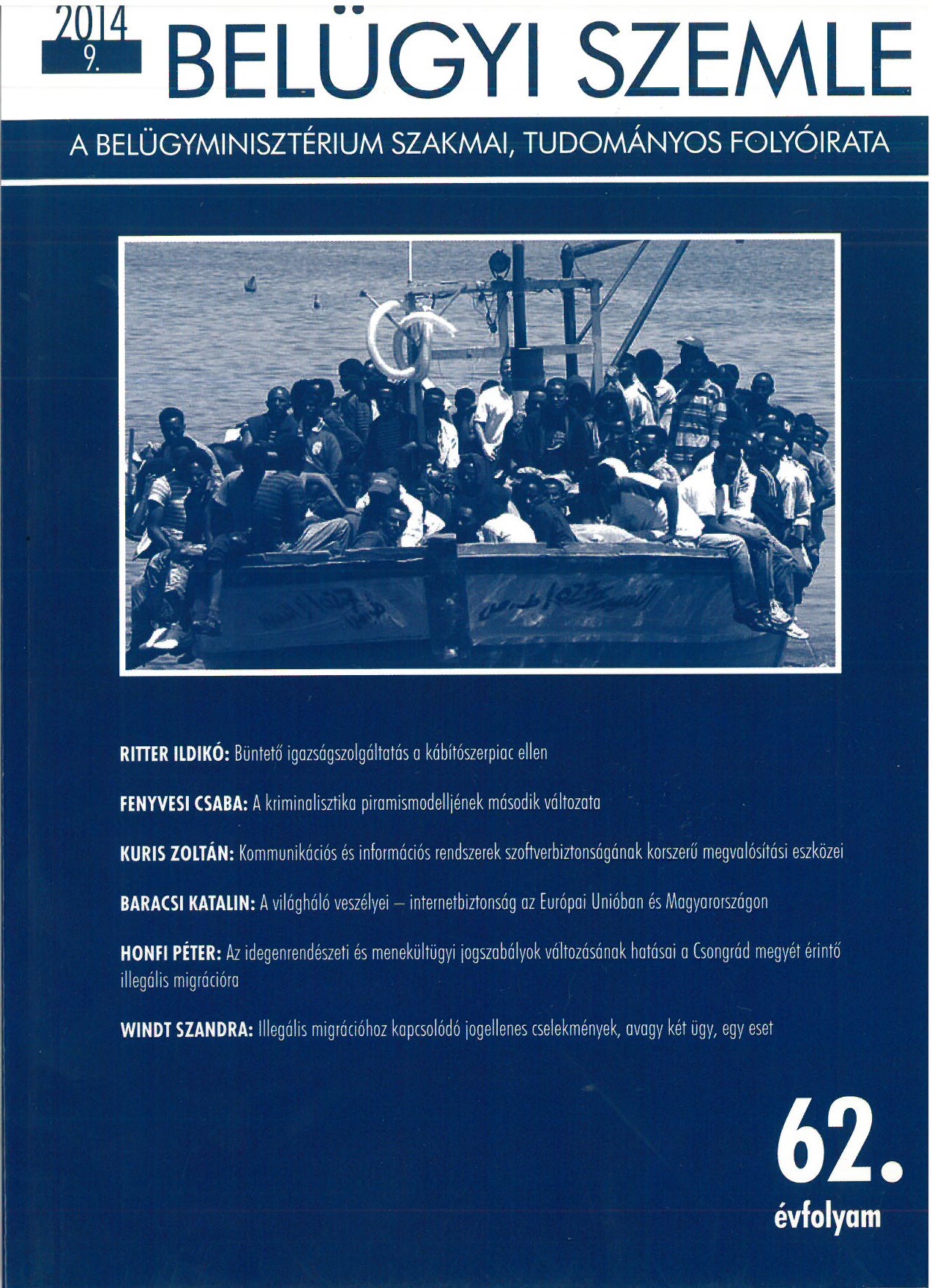Keywords
pyramid model of criminalistics
mediators
focal identification theory
mediators
focal identification theory
How to Cite
The second version of the criminalist pyramid-model. (2024). Academic Journal of Internal Affairs, 62(9), 32-43. https://doi.org/10.38146/bsz-ajia.2014.v62.i9.pp32-43
Abstract
The author draws a three-level pyramid-model that incoroporates all the categories of evidence defined by the Hungarian Criminal Procedure Act.
References
.

This work is licensed under a Creative Commons Attribution-NonCommercial-NoDerivatives 4.0 International License.
Copyright (c) 2024 Academic Journal of Internal Affairs
Downloads
Download data is not yet available.
Similar Articles
- Csaba Szabó, Interview with Professor Csaba Fenyvesi, recipient of the Dr. Imre Kertész Award , Academic Journal of Internal Affairs: Vol. 73 No. 8 (2025)
- Csaba Fenyvesi, The pyramid-model of forensic sciences , Academic Journal of Internal Affairs: Vol. 60 No. 10 (2012)
- Csaba Fenyvesi, József Orbán, Electronic data as a cornerstone of the 7-5-1 forensic pyramid model , Academic Journal of Internal Affairs: Vol. 67 No. 2 (2019)
- Ivett Nagy, Examining certain changes to the current Code of Criminal Procedure in the light of the fight against organized crime , Academic Journal of Internal Affairs: Vol. 71 No. 4 (2023)
- András Vigh, Unorthodox questions of forensic identification theory , Academic Journal of Internal Affairs: Vol. 69 No. 10 (2021)
- Valér Dános, Csaba Szabó, „Give me the fact and I serve you justice” , Academic Journal of Internal Affairs: Vol. 69 No. 10 (2021)
- Gábor Éberhardt, Identification of overloaded migration concept in migration theory , Academic Journal of Internal Affairs: Vol. 68 No. 1. ksz. (2020): Special Issue
- Valér Dános, József Krenner, „We came here as servants and we leave as revolutionaries.” Interview with Professor Géza Finszter, Doctor of the Hungarian Academy of Sciences, on the occasion of his 80th birthday , Academic Journal of Internal Affairs: Vol. 73 No. 6 (2025)
- Gábor Éberhardt, Identification of overloaded migration concept in migration theory , Academic Journal of Internal Affairs: Vol. 67 No. 10 (2019)
- Mariann Sidló, The subjective side of judging guilt, as interpreted in 1925 by the later head of the first Hungarian department of criminalistics, Dr. Jenő Unger , Academic Journal of Internal Affairs: Vol. 73 No. 1 (2025)
You may also start an advanced similarity search for this article.
Most read articles by the same author(s)
- Csaba Fenyvesi, Dóra Rengel, Meaningful of a 'petty criminal case , Academic Journal of Internal Affairs: Vol. 73 No. 2 (2025)
- Csaba Fenyvesi, Justizmord and investigative errors , Academic Journal of Internal Affairs: Vol. 62 No. 3 (2014)
- Csaba Fenyvesi, The pyramid-model of forensic sciences , Academic Journal of Internal Affairs: Vol. 60 No. 10 (2012)
- Csaba Fenyvesi, Global trends in forensic science in the 21st century , Academic Journal of Internal Affairs: Vol. 61 No. 10 (2013)
- Csaba Fenyvesi, Every police organization is only as good as its data , Academic Journal of Internal Affairs: Vol. 70 No. 11 (2022)
- Csaba Fenyvesi, Concepts and academic approaches in criminal investigation in continental and common law , Academic Journal of Internal Affairs: Vol. 63 No. 2 (2015)
- Csaba Fenyvesi, Crime Prevention Function of Criminalistics , Academic Journal of Internal Affairs: Vol. 69 No. 10 (2021)
- Csaba Fenyvesi, Jack the Ripper and modern forensic methods , Academic Journal of Internal Affairs: Vol. 65 No. 7-8 (2017)
- Csaba Fenyvesi, Criminal chess in the light of forensic principles , Academic Journal of Internal Affairs: Vol. 64 No. 11 (2016)
- Csaba Fenyvesi, Presentation for recognition and faith , Academic Journal of Internal Affairs: Vol. 66 No. 4 (2018)
